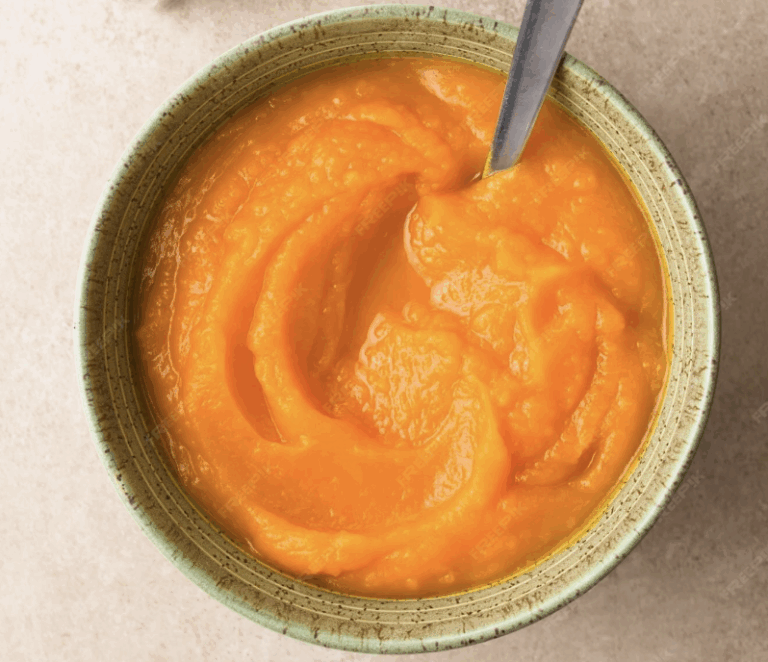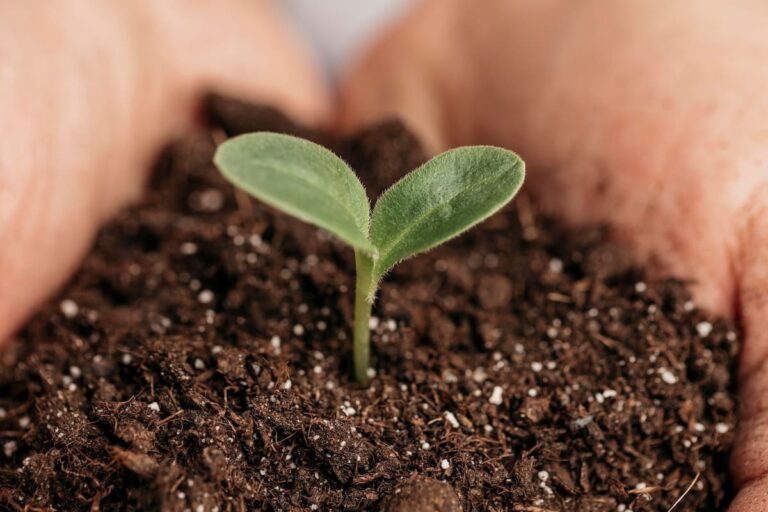5 Tips For A Better Beginner Garden
Are you eager to garden but aren’t quite sure where to start? Today I’m going to talk about my top 5 tips to help you grow a successful beginner garden.

It’s easy to get overwhelmed by the amount of gardening information out there. There’s even thousands of books on the topic, all claiming they will make you the perfect gardener. Spoiler alert: there is no such thing as a perfect garden or gardener. Don’t spend your time looking at loads of confusing information, it will only hinder your progress with your own garden.
This post is all about the beginning gardener and what to focus on to get you started. Leave the rest of the information out there for a later time. It’s time to get your hands dirty and just get started!
Tip #1: Learn Your Growing Season
When growing a beginning garden your zone doesn’t really matter, even though a lot of emphasis is placed on that information. If you’d like more information as to why, check out my blog post on How to Use Growing Zones.
Instead, what you need to focus on is your growing season. What does that mean? Your growing season is the number of days between your average last frost in the spring, and your average first frost in the fall. Have I lost you? Here’s a simple break down.
Your average last frost in spring is the predicted date that your area will experience your last frost of the season. Because it’s a prediction of weather, it’s not perfect but it will tell you that it’s very unlikely your geographical area will experience a frost after that date. This is important because many plants grown in a vegetable garden are not frost hardy and will likely die or have their growth stunted by a frost.
Your average first frost date in the fall is the date that you can expect your region to start experiencing frosts again. By this date you want to make sure all plants that are not cold or frost hardy have been harvested or had the vegetables harvested from them.
The number of days between your average first and last frost dates is called your growing season. This is the number of frost free days you can reasonably expect in a given year to grow plants.
Here’s mine:
You can find your dates and length of growing season by entering your zip code into the Farmer’s Almanac if you are in the U.S. Outside of the U.S. a quick Google or Internet search may help you find yours.
Now why, exactly, is this so important?
Each plant has a “days to maturity” or a “days to harvest,” meaning the number of days that plant will take before it will produce vegetables or be ready for eating. If you have a growing season of 110 days but you want to plant something that takes 120 days before it’s ready for harvesting, then that variety is probably not a good choice for your garden. Choose a different variety that will be ready to harvest in less than 110 days.
Check out my blog post on Growing Seasons for even more information. But, again, just go with the basics for now and leave the more detailed information for when you’ve got a little practice under your belt.
Tip # 2 Determine How Much Space You Have
I’ll be the first to admit that I’m guilty of trying to plant way more plants than I have space for. It’s so easy to want to plant “all the things” that you forget that you have a finite amount of space to work with. Before deciding you’re going to plant 30 tomato plants, figure out how much space you have available so you can have a more reasonable goal.
What Will You Grow In?
It’s also important to know what space you’re going to plant in. Are you using containers? Are raised beds more practical for you? Or do you have the space to plant directly in the ground? These are important questions to ask yourself before deciding on what you want to plant.
If you are someone that has to garden on your apartment patio, then decide what pots or planters will work with your space and what plants will do well in them. If you only have room for a few 5 gallon pots, decide which vegetables, fruits, or even flowers you’d like to grow the most and focus on those.

If you’re someone that has 100 square feet of garden space or more, you can select what you use the most of and start there. If you still have space left, move on to things you’d like to be able to grow and expand the variety of plants even further.
Size Your Beds For Easy Access
If you are planting in the ground or in raised beds, make sure you build beds or rows that you can easily reach the center of. If you make a bed that’s 5 feet wide, chances are you are not going to be able to reach the middle of it. Instead, try 3-4 foot beds so you can easily reach and harvest from the middle and edge of the beds.

Regardless of what you plant in, make sure you have rows or space wide enough to move in between them. It can be very frustrating if you leave a small path in between beds or containers only to have a plant bush or vine out and you can no longer easily move through the path. Make sure you leave plenty of room so you can move through the space and be able to harvest.
Tip #3 Consider The Conditions of Your Growing Space
What do I mean by conditions? Think about things like how much sun the space receives, are there pollinators around and what plants are you planting next to each other. These are just a few of the things to consider when planning your garden.
Sunlight
Every plant needs some amount of sunlight to grow. Some plants need a lot, like peppers and squash, while some can get away with less such as leafy greens and many root vegetables. Some leafy greens will grow in full shade, but their growth will be significantly slowed. You can start to plan what plants would be a good fit for the space once you know the amount of sunlight your growing space receives.
You will also need to think about how a plant grows when it comes to sunlight. If you are growing something tall like a tomato, or something that needs trellising like a cucumber, these plants will create shade spots around them. If you build a trellis and fill it with cucumbers, but put a squash plant right on the other side where it will get shaded, your squash plant is not going to be very happy.
However, you can take that shaded space created by the trellised cucumbers and plant something like lettuce or spinach that likes shade and cooler temperatures. This is a more efficient use of the space and means you can grow more food in a smaller area.
Companion Planting
This is part of companion planting – the idea that you pair different plants together to create a beneficial relationship. Using the shade created by the cucumbers to grow lettuce and spinach is a great example of using one plant to benefit another. Companion planting is a rabbit hole that’s easy to go down, so I won’t go into great depth in this post. Utilizing the concept of companion planting can help you grow more in a smaller space, and help with pest issues in some cases as well.
Companion planting can be very beneficial, but when planting any plant be sure to consider how much space that plant needs to thrive. A melon or other vining plant will need a lot of space, even though they start off as pretty small plants. It’s easy to think that you can put seedlings close together because they start off with large gaps in between plants.

Plant Spacing
When you plant seedlings, do not look at the size of the plant when it goes into the ground. Instead, think about the size of the plant once it’s fully grown. Tomato plants can’t be planted right next to each other because when they get bigger they need space to expand and for air to get between the leaves. If you pack them in too tight, it could stunt growth and open them up for developing fungal infections because air isn’t able to circulate. They need at least 18-24 inches between them to grow properly.


Tip #4 Decide What You’re Going to Plant
It’s easy to get caught up with flashy vegetables or all the different types of tomatoes, but when choosing what you’d like to plant, try to be realistic (I know it’s hard!) and take the following things into consideration. I’ve fallen into the trap of “I want to grow it all” way too many times, so I’m here to try and help you avoid it.
What Does Your Family Like to Eat?
First and foremost, grow what you’re going to eat. Growing kale if your family doesn’t like it doesn’t do anything but waste your time and the space it takes up in the garden. I admit, I’ve done this more than once. Don’t be like me, pick the vegetables you and your family actually like to eat.
Once you’ve determined what your family likes to eat, look into varieties that grow well in your area. Don’t choose a long season vegetable if you have a short growing season. You need enough warm weather to allow the plant to grow, produce, and then ripen fruit. Read my post about growing seasons for more in depth information about how you can use the number of days in your growing season to figure out if a variety is likely to grow well or not. This post also goes into more detail about your microclimate, which is even more important to know than just your growing season.

Will The Plant Varieties Grow Well In Your Area?
It’s important to know if the plant variety you’ve chosen will grow in your area in order to set you up for success. It’s frustrating and easy to blame yourself when something doesn’t grow, but it could be as easy as choosing the wrong variety to begin with. It may not have anything to do with you “having a brown thumb” as they say.
Utilizing Your Available Space Wisely
Now you’ve determined what your family eats and what varieties of those grow best in your area, look at what space you have to grow them in. If you only have space for a few containers, or a small raised bed, that will limit how much and which of those varieties you can grow. Choose one that grows well in containers if you’re container gardening. Or if you have a smaller space plan your garden so that you grow only what fits in that space. A butternut squash vine will not fit in a small bed that is better suited for a couple of peppers. It will only lead to frustration.
Start Small
Lastly, and maybe most important, start small and work your way up. If you’re new to gardening, don’t try to grow all the things in the first year. I’d argue even in your first few years. Start with a small garden and learn from it. Take what you learn and apply that to a slightly bigger garden the following year. It’s tempting to jump right in, but you will likely only find overwhelm instead of the peaceful garden you’re dreaming of. It might be hard, but your sanity will thank you.
Tip #5 Keep a Gardening Journal
How many times have you said “I’ll remember that” only to forget a short time later? If I had a penny for every time I’ve said that I’d be rich. Who am I kidding, if I had a penny for every time I’ve said that just about my garden I’d be rich. This is where journaling comes in.
Keeping a record of your gardening journey, to me, is essential. Not enough of us do it, I’m certainly not perfect at it, but what I do record is priceless information to future me. It saved me by telling me what I planted where, how long it took for a seed to sprout, whether a particular technique worked or not for me, plus many other things.
Many people write journals in traditional, handwritten form. But they can also be pictures, video, diagrams, or any other type of record that you find to contain useful information for you and that you will reference. I’ve used all of these in the past and they’ve all been very helpful to me.

What Information Should You Include?
Having a record of when you started seeds and when they germinated will help you plan for future years. Over time you’ll narrow down when to start each variety you like to grow. Then you can transplant them, or direct seed them, at exactly the right time for your area. You’ll see your success rates go up as you gather more of this information.
Other things it’s useful to record include where you planted each plant in your garden space. If you want to practice crop rotation you’ll need a record of where you planted things each year so you don’t plant the same thing in the same space for consecutive years. It’s also good to note if you had any specific disease or pest problems, what methods you used to deal with them, and if those methods worked.
Journals can also be a great place to list what varieties did well in a given year and which didn’t. If one variety of tomato did great, but another didn’t, recording that will remind you the following year to focus more on the varieties that grew well.
And last of all, record anything that you feel might be useful in following years. Maybe planting a tomato and basil plant together worked great. Or maybe the soil in one area of the garden seemed to be more fertile than another. Anything at all that may help you improve your garden in the following years is helpful to document. You’ll be thankful you did!
Conclusion
Utilizing these 5 tips will allow any beginning gardener to find success in the garden. As you become more seasoned, there are other tricks you can implement to grow your garden even more. But it’s best to start small and work your way up. It’s easy to get overwhelmed by the shear amount of information out there. Start simple, and utilize these tips for your best garden yet.
Happy Gardening!






